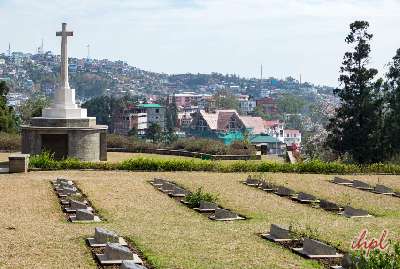India is well known as a diverse country for lots of fascinating reasons. This country has several languages, religions, cuisines, and beautiful destinations. But do not forget Indigenous Tribes. These tribes are scattered to different parts of the country over time, but they still draw the attention of anthropologists from across the world. Almost all these major tribes of Nagaland still follow their cultures and traditions, which is also a paramount factor that people get inclined to explore villages of Nagaland. You can explore these tribes by exploring the villages of Nagaland on your vacation here. Contact our tour experts to book your Nagaland holiday with us to enjoy a remarkable northeast journey.
List of recognized tribes in Nagaland
Angami
One of the prominent tribes of India who belong to Nagaland is the Angami Nagas. With a total population of approximately 12 million, they have their presence in most parts of the state. Amongst the other regions, the Angami Tribe resides majorly in and around Kohima. These people have finesse in woodcraft and artwork distributed across the country. They are also the producers of beds, powerful machetes, cane furniture, shawls, bamboo products, and many others.
Zeliang
A majority of the Zeliang Tribes’ population lives in the Tamenglong region of Nagaland. This tribe is believed to be Tibeto-Burman or Sino-Tibetan from the Mongolian Race. These people shifted to the Indian territories from Tibet and some southern parts of China. These people follow the Patriarchal social system where every person in the clan enjoys equal rights. This tribe of Nagaland follows the close cousin marriage system and is very particular about it.
Kuki
The Kuki Tribe of Nagaland still lives a nomadic life in the parts of the state. These people always travel in groups and build their houses close to each other. Like other tribes of India, Kukis are also expert producers of many things, including yarns and dwarf cotton. These people have a unique choice of clothes as they pair a headcover with a unique jacket. The people of this tribe are fond of smoking, and they have some innovative and different ways to execute the process.
Kachari
Kachari tribe of nagaland, also known as Bodo-Kachari, is another indigenous tribe of India that is densely populated in Nagaland. With a population of approximately 14 million, the people of this tribe have lured a lot of people from around the world. They speak languages like Assamese and Bodo-Garo. The predominant religious followership amongst these people is Hinduism, but you will find a minority of people following Christianity and Ba-Thou. Some groups of this clan are believed to live in the foothills of Assam.
Chakhesang
Chakhesang is a part of the Naga tribes of Nagaland, which was divided from the rest due to the cultures and traditions they follow. The people of this tribe are also known as former Agamis from the east. They are believed to have their roots in that portion of India. This tribe is further divided into two groups, Khezha and Chokri. Most of the villages of this tribe are located in the Phek district of Nagaland.
Pochury
Pochury is another Naga tribe in Nagaland with a lot of popularity amongst anthropologists; These people have inhabited the Phek district of Nagaland from the early times. According to one of their exciting traditions, the Pochury tribe members have the liberty to remarry, but only after they have celebrated the two main festivals of the village. The people in the group have equal rights, and they are against dowry.
Chang
Interestingly it is believed that the Chang Tribe of Nagaland originated from a species of peepal tree named Chongnyu that has an exceptional growth in terms of height. Keeping this as their ideal, the Chang tribe of Nagaland has the stories of their ancestors who have done unimaginable things in the past. They believe in agriculture and have adopted that as their source of living since the very beginning.
Ao
Amongst all the groups of tribes in Nagaland, AO Nagas or AO are the major ones. Be its existence that’s questioned or their rituals, everything about this tribe is better than the others. Most other tribes have taken cues from AO’s existing rules. You can spot the village of this group in the Mokokchung district of Nagaland.
Konyak
When it comes to the Naga’s ethnic group, Konyak Tribe is the one that is known to be the most prevalent of all. The inhabitants of the Mon district, Konyak, are well-known for their unique set of traditional practices. The people of this group practice gunsmithing, brasswork, iron-smelting, and gunpowder making. Some people of this tribe of India are proficient in making wooden sculptures.
Phom
The Naga Tribe, which has its territory located in central Nagaland, is known as Phom. They are the tribal group of India who has their villages surrounded by AO from the west, Konyak from the North-East, and Chang from the South. Amongst all the other villages, Yongnyah is known to be the largest. They have their regional language of Phom, and the people of this tribe follow Christianity.
Khiamniungan
Densely populated in the Noklak district of the state, Khiamniungan is a tribe whose origin is very uncertain. However, 35% of the population of this tribe can be found in this region. Also, there are no written or spoken records of this tribe before the British invasion. When they came into existence during the British Raj, they were known as Kalyo-Kenyu, which means “State House Dwellers.”
Yimchungrü
Yimchungrü is a well-known Naga Tribe of India having a unique sense of fashion and jewelry. Their territory is limited to the Kiphire and Tuensang districts of Nagaland. These people are strongly bonded with their music culture, and their love for agriculture and music is unparalleled. Their traditional dress includes beautiful headgear decorated with feathers and hair.
Sangtam
Sangtam Tribe is comparatively lesser in number, yet with a boasting history, they form a significant part of the Naga tribe. These people follow Christianity and practice shifting cultivation. However, the best part of this tribe is that they have successfully retained all their rituals and traditions even after embracing Christianity.
Lotha
The Lotha tribe is believed to have migrated from eastern China early. However, some people in the tribe are adamant that their ancestors have been from Manchuria and Lenka. A place in Nagaland, Wokha, is known to be the traditional home of this tribe.
Sumi
Prevalent in the Zünheboto District of Dimapur, this Naga tribe of India has a long history but a feeble population these days. They speak languages that are unique from other Naga groups as well. They follow the religion of Protestantism and are known to be the headhunters amongst the other tribes of Naga.












